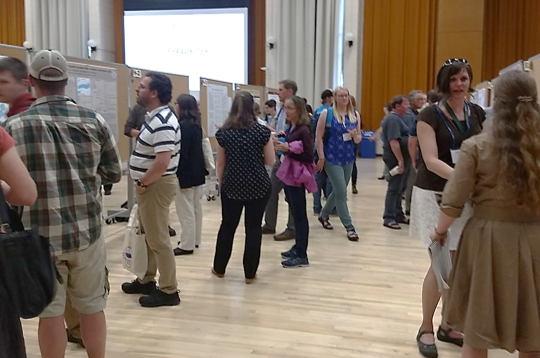Lake Futures researchers Jess Ives and Serghei Bocaniov presented their work at the 62nd annual International Association for Great Lakes Research (IAGLR) Conference. This conference was held in Brockport NY, USA and hosted by The College at Brockport, State University of New York. This year, more than 650 scientists and researches from academia, government agencies and non-governmental organizations gathered together to improve our current understanding of complex environmental problems affecting the world’s largest lakes, such as cultural eutrophication, invasive species, new emerging contaminants, and climate change.

Poster session at 62nd annual International Association for Great Lakes Research (IAGLR) Conference. Photo by Serghei Bocaniov.
Jess Ives presented a poster ‘Using expert knowledge to craft a watershed-level visualization of eutrophication in Lake Erie’. Her research uses fuzzy cognitive maps to visualize how different factors connect around Lake Erie eutrophication.
On Tuesday, Sergei Bocaniov presented his work on the role of physical processes in algal bloom formations in Lake St. Clair, a large lake located between Lakes Huron and Erie. He chaired the session on ‘Harmful Algal Blooms (HABs) and their Toxicity – Remote Sensing and Modeling Approaches’ (co-chairs: Philippe Van Cappellen and Homa Kheyrollah Pour), which was well attended and drew attention due to growing concern over increasing severity, extent, frequency and toxicity of HABs in aquatic systems. On Wednesday, Serghei gave a talk titled ‘Huron-Erie Corridor: On the role of Lake St. Clair in attenuating phosphorus loads’.
The work of our Lake Futures researchers has implications for managing eutrophication and meeting nutrient reduction targets to Lake Erie.